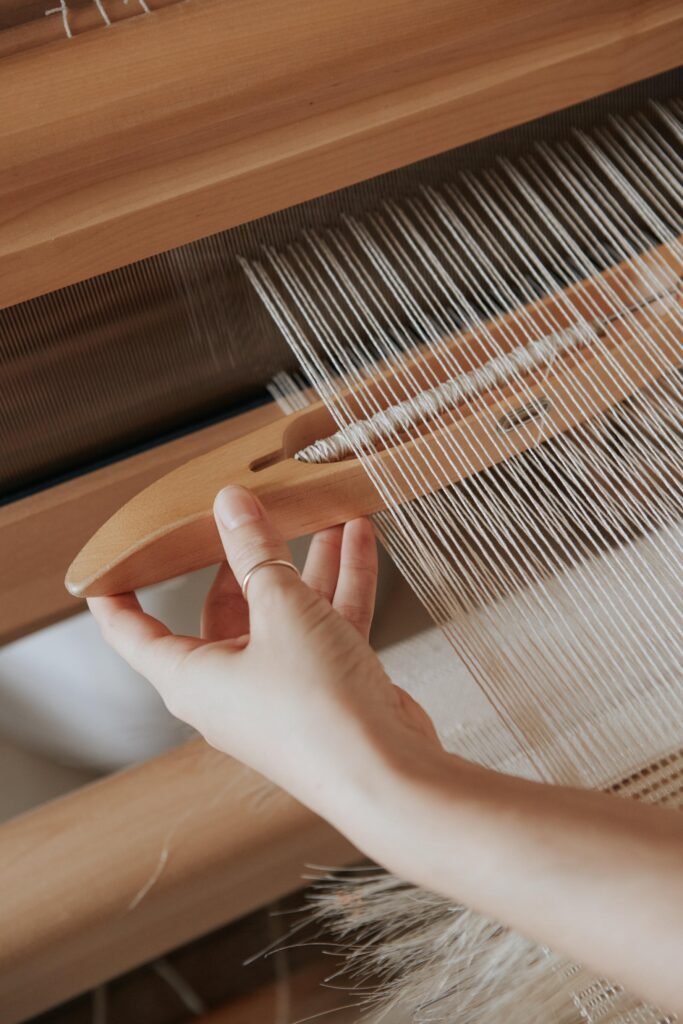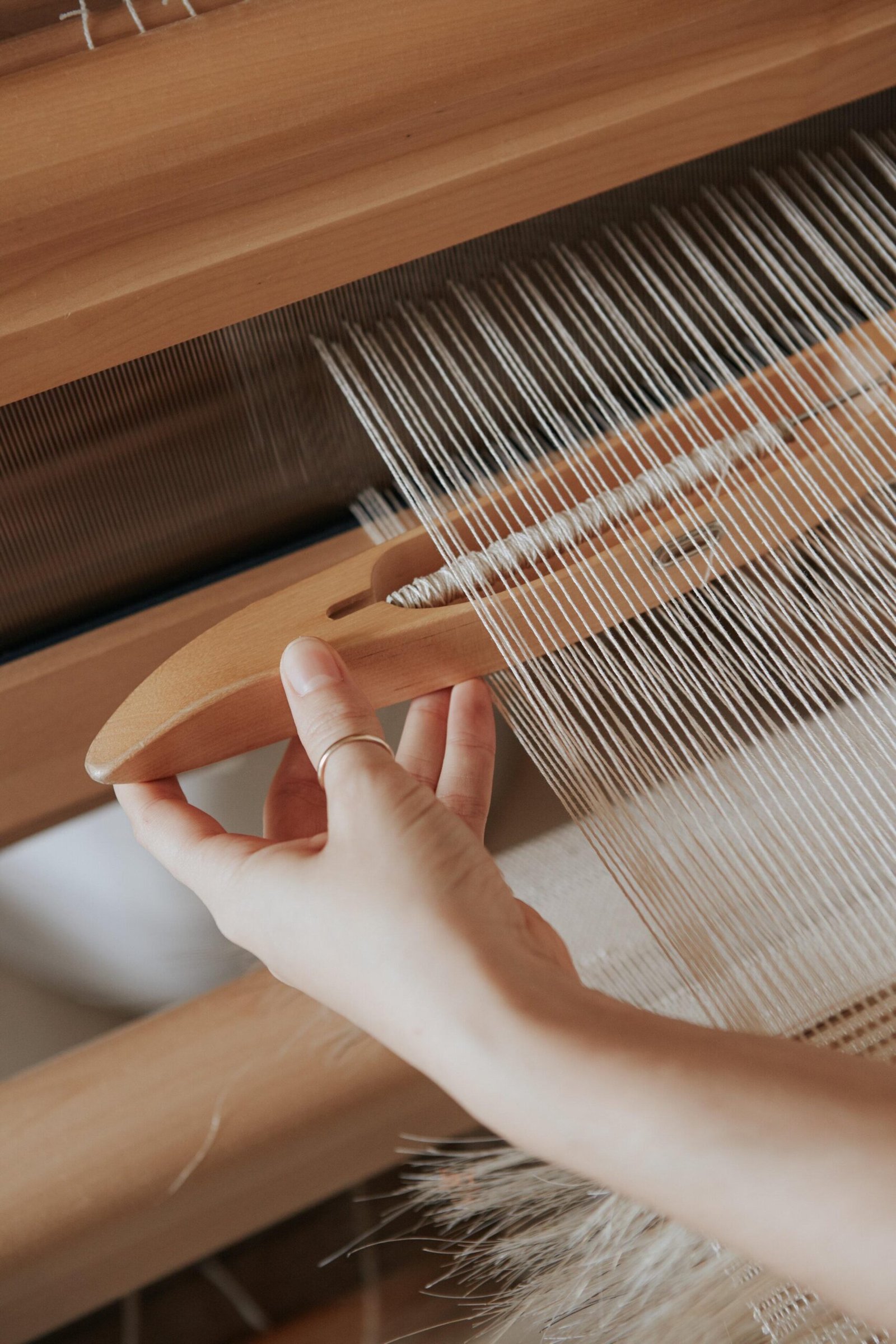
Handweaving beautiful fabrics into fabric garments is an incredible hobby, yet sewing garments from such material can be challenging.
Designs that appear crisp up close may lose shape from a distance due to yarn size or fabric weaving pattern differences.
Given these considerations, many handweavers may hesitate to sew their own fabric; however, sewing it yourself may prove much simpler than you anticipate.
How to Start
Making fabric from scratch can be an exciting, fulfilling, and cost-effective alternative to purchasing premade fabric. Additionally, creating your own fabric from scratch provides a fantastic opportunity for recycling special fabrics that would otherwise go to waste – ideal for wedding dresses, baby blankets and special events such as first day of school outfits!
Handwoven cloth can be an enchanting treasure, yet challenging to work with. This is because not all yarns used to craft it behave similarly in finished fabric – their characteristics can have significant ramifications for how the finished piece may behave.
Handwoven textiles such as khadi or handloom saris can be difficult to sew due to being tightly “sett” and tending to ravel easily, so this downloadable addresses these challenges and provides tips for making working with handwoven fabric more manageable.
One of the easiest solutions for using handwoven fabric is applying fusible interfacing on its reverse. This will stabilize it and allow it to act just like commercial fabric. Pin your pattern pieces onto fabric, trace around them with chalk lines, cut along them and stitch close 1/8″ within each chalk line before cutting on line. Finally, sew in zig-zag fashion along the woven edge for additional stability that prevents raveling later. All these methods provide fantastic opportunities to utilize your beautiful and unique handwoven fabrics!
Materials
Weaving is both an art and craft that demands many skills. From learning how to warp your loom to understanding drafting process, weaving is both challenging and relaxing – helping to develop cognitive skills such as problem-solving, sequencing and time management as weavers move through each step of designing their patterns. Weaving can also improve hand-eye coordination, dexterity and patience as one works on their designs step-by-step.
Weaving can be created using yarns, roving or fabric strips woven together. Fabric strips add color and texture to weaves – commonly seen on rag rugs but also suitable for wall hangings and scarves. When weaving fabric strips make sure they match up width-wise with your warp for best results otherwise distortion could occur.
Weaving can provide weavers with a sense of accomplishment and pride for their creations, giving them a sense of achievement and pride that stems from this traditional art form that has been passed down from generation to generation and continues to provide income opportunities in rural areas worldwide.
Weaving can teach weavers a lot about themselves and their community as they learn to spin, warp, dye and weave their own textiles. For many weavers it provides their first opportunity to showcase their creativity; for others it serves as an escape from daily stresses that requires concentration on something peaceful and therapeutic – weaving skills can even apply beyond weaving – with math comprehension improvements coming more naturally thanks to weaving lessons being acquired as well as standing tolerance improvement due to occupational therapy often using weaving as therapy tool for upper body strength, focus and attention issues!
Looms
Weaving can be an intimidating craft to start. There are so many looms out there offering something different and it may take some trial-and-error before finding one you enjoy using. Once you start weaving, your first goal should likely be making something small to see if you actually like doing it before committing time and resources to this pursuit. Start small – like weaving a scarf or coasters.
Purchase of your loom is one of the more costly parts of getting started in weaving, but its investment will quickly pay for itself with every project completed. Your choice of loom will determine what kinds of pieces can be weaved.
As soon as you are ready to create fabric on a loom, the first step should be warping it. This involves using long strips of fabric that measure twice the length of your loom plus several inches to loop around each peg on the loom and cover each peg on your warping board – this may take time but will definitely pay off!
Once your fabric has been constructed, it will need to be washed and dried before using it. This step is critical because otherwise its size could shift as a result of natural shrinkage during finishing processes; washing will ensure your piece stays the correct size as well as prevent potential damages to it.
Weaving Techniques
The basic over-under pattern of yarn on a loom has given way to an incredible range of weaving techniques that have revolutionised textile industry. Jacquard saris and khadi fabrics are being produced that push creative and technical limits of textile fabrication.
Beginning to weave is an endlessly rewarding pursuit, but to get started on this new trend it is essential that you master the fundamentals. Learn to weave a basic basketweave fabric or use your rigid heddle loom to craft beautiful wallhangings!
Once you’ve mastered basic weaving techniques, you can start exploring more intricate patterns. One trend worth keeping an eye out for is combining different yarns to produce luxuriously layered fabrics; using ones with distinct sizes, textures and fibre contents produces incredible results.
Weaving is an intricate art that requires dedication and concentration. Even small changes to designs can lead to unexpected results; yet this unpredictable nature makes weaving such an intriguing art form.
Most beginning weavers begin their weaving journey by creating lovely scarves or wall hangings, but once you have mastered these essential basics you can start experimenting with your weaving to produce that special piece you have always dreamed about creating.
Warp thread can add depth and dimension to your weaving, providing structure for your fabric while keeping skeins together during weaving. In addition, warp can also add patterns, such as stripes, checkerboard patterns, or geometric designs. Another way of creating more 3-D fabric is sewing it after it has been marked using water soluble markers; sewing handwoven fabrics is similar to sewing regular fabric; more information can be found here in this handy guide for sewing your handwoven fabrics.
Sewing
A weaving loom can produce beautiful fabric, but to turn that fabric into clothing you’ll require sewing techniques. Luckily, many of the same techniques that work for commercial fabric will also apply when it comes to handwoven cloth. Experimentation and sampling will help you learn quickly – so start small by choosing modestly priced yarns for your first few projects and soon you will become an accomplished sewist of your own handwovens!
As sewing with handwoven textiles requires different tools than sewing other fabrics, it’s crucial that you understand all the steps involved and use the appropriate needle and thread. If making something like a hem for instance, then special thread may be required as well as knowledge about stabilization techniques that suit this fabric type.
These additional steps are integral to creating an exceptional final product. Depending on the structure and design of your fabric, certain techniques will work better than others – for instance if creating a shawl with a twill design, brocade or damask stitch can help disguise seams while adding decorative flair.
Beginners to sewing or handwoven fabric have numerous resources online for learning this craft, such as Daryl Lancaster’s five-part webinar series covering all aspects of sewing with handwoven fabric. Starting with designing fabric to get maximum usage out of it and ending up creating garments that show off its handmade process – Daryl Lancaster covers it all.

